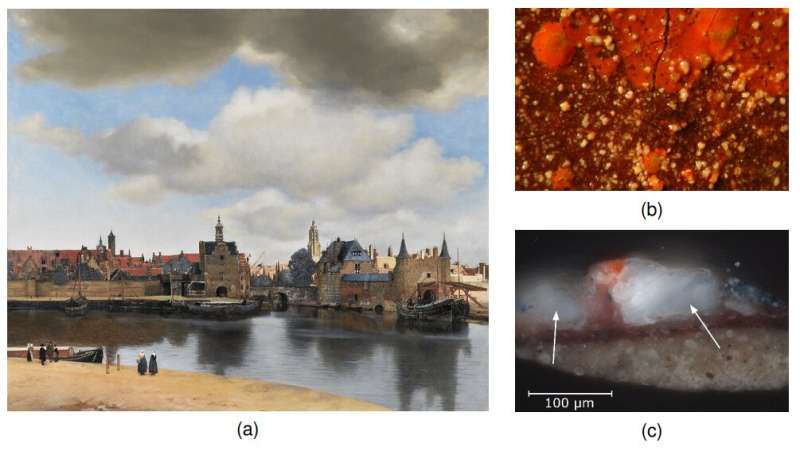Numerical modeling for predicting the degradation of historical oil paintings

A large number of historical oil paintings from museum collections worldwide show signs of deterioration due to metal soap formation. Metal soaps affect the structural integrity and visual appearance of these paintings. Understanding the influence of metal soap formation on the mechanical response of the paintings can help with the long-term conservation and preservation of these valuable works of art. For his Ph.D. research, Gijs Eumelen developed a numerical model to simulate the mechanical behavior of oil paintings due to the formation of metal soaps.
Metal soap formation is mainly a problem in paintings that contain lead- or zinc-based pigment particles. Unfortunately, most oil paintings from the 15th century until the present day contain one or more of these pigments. Therefore, metal soap formation threatens a large portion of our cultural heritage.
Metal soaps develop from a series of complex chemical reactions between the metal-based pigment particles and the oil binder. They may develop as crystalline aggregates and, over a time span of decades to centuries, may reach sizes up to several hundreds of micrometers. Accordingly, these crystals cause significant deformation of paint layers, and can protrude through the outer surface, leading to damage to the paintings.
Volume change
To understand the mechanical response of oil paintings due to the formation of metal soap crystals, Gijs Eumelen developed a numerical model that simulates their formation and growth.
The formation of metal soaps is accompanied by a change in volume, which is accounted for in the model through a chemical growth strain. This provides a coupling between the chemical processes and the mechanical response. Crystal growth leads to the formation of cracks in the painting, which in turn affect the chemical processes. The predicted mechanical response of the system, in the form of the surface deformations, cracking and delamination patterns, appears to be in good agreement with observations from cross-sectional photographs of real paintings.
Non-invasive testing
Another issue in understanding the mechanical behavior of oil paintings is related to the uncertainty on the actual mechanical properties of the paint. These are affected by the age of the paint and the constituents used to create the paint in the first place.
In general, the mechanical properties of paint materials can be assessed by performing tests on the actual paintings. However, this is not possible as such tests would most likely damage valuable, historical paintings. With this in mind, the mechanical properties of the paint can be obtained through non-invasive nanoindentation tests on very small samples from a painting.
Non-invasive tests are relatively easy to perform, but difficult to interpret, also because the small paint sample during testing is embedded in a relatively stiff, supporting resin. To accurately account for the influence of the supporting resin on the indentation response of a paint sample, Eumelen derived an analytical indentation model that describes the elastic and plastic indentation behavior of embedded material samples. The practical applicability of the indentation model has been demonstrated by deducing the elastic properties of a paint sample as reported in the literature.
Understanding the mechanical behavior of these paintings due to metal soap formation might ultimately be of assistance when formulating conservational treatments. The model developed by Eumelen during his Ph.D. can contribute to this, but it’s just a first step. It will take several years before the model is at a level that it can be used for this purpose.
Metal soaps critical in speed of deterioration of oil paintings
Citation:
Numerical modeling for predicting the degradation of historical oil paintings (2022, September 9)
retrieved 9 September 2022
from https://phys.org/news/2022-09-numerical-degradation-historical-oil.html
This document is subject to copyright. Apart from any fair dealing for the purpose of private study or research, no
part may be reproduced without the written permission. The content is provided for information purposes only.
For all the latest Science News Click Here
For the latest news and updates, follow us on Google News.

